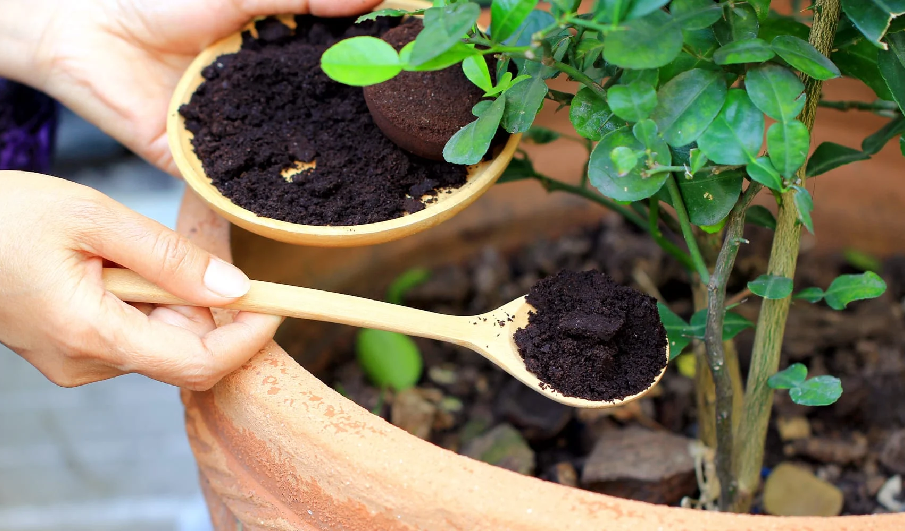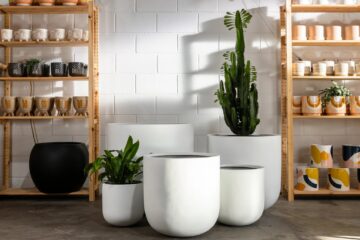ORGANIC FERTILIZERS ON POTTED PLANT GARDENS

Fertilizer is essential to the success of plant containers gardens, whether they are grown indoors or outdoors. The simplest method for fertilizing potted plants is to prepare a nutrient solution and pour it over the soil mix. The fertilizer is quickly absorbed by the roots and replenishes what is lacking in the existing soil. Even if your potting mix is perfect from the start, it will quickly become depleted of nutrients due to constant use by plants and leaching out by watering. The more quickly a plant grows, the more fertilizer and water it requires. As a result, as watering increases, so does leaching and nutrient loss.
Once you’ve selected a fertilizer (make sure you use an organic one! ), you’ll need to apply it about once every two weeks for a grown plant container. This assumes that you’re growing in a high-quality, compost-rich potting mix that will help retain nutrients. With that said, some gardeners prefer to fertilize with a weak nutrient solution every other time they water. If this is your preference, make sure to use about 1/5 of the amount called for on the label.
Use organic fertilizer blends when fertilizing potted plants (derived from many nutrient sources). Organic fertilizers are just as effective as chemical fertilizers, do not burn, and provide the necessary macronutrients (N-P-K) as well as a wide range of minerals, micronutrients, amino acids, and vitamins. It is also critical to know when to fertilize. Plant nutrient requirements vary according to growth stage. To get the most out of annual bedding plants, for example, start them with a high-nitrogen fertilizer to promote growth and leaf development, then switch to a low-nitrogen, high-phosphorous solution to encourage blooming.
Every fertilizer bag or bottle has three numbers on the front. The numbers are always in the same order and represent the percentage by weight of N-P-K, or nitrogen, phosphorus, and potassium, in the fertilizer. Each of these is required for proper plant growth and development.
A bag of all-purpose organic fertilizer, for example, might bear the numbers 5-5-5. The first number represents nitrogen (N), which promotes lush, green growth as well as overall plant health. A nitrogen-rich fertilizer is ideal for plant container-grown leafy vegetables like lettuce and Swiss chard. Blood meal, feather meal, and liquid fish emulsion are all-natural sources of this nutrient.
The second number denotes phosphorous (P), which is required for the development of healthy roots as well as fruit and flower development. Blooming plants, such as tomatoes, peppers, and most ornamentals, benefit from phosphorus-rich nutrient solutions, especially when they are ready to set buds. Organic fertilizers with high phosphorus content include bone meal, seabird guano, and a variety of liquid blends.
Potassium (K) is the third number, and it is required for stem growth and overall plant vigor. Potassium is primarily applied to root crops such as carrots, beets, and potatoes, but it is also applied to young trees in the fall to encourage strong roots during the winter months. Organic potassium sources include cell-PO-mag (potash magnesia sulfate), palm bunch ash, and a variety of liquid fertilizers.
Notice: Function WP_Scripts::localize was called incorrectly. The $l10n parameter must be an array. To pass arbitrary data to scripts, use the wp_add_inline_script() function instead. Please see Debugging in WordPress for more information. (This message was added in version 5.7.0.) in /home2/medicalguru101/public_html/theneocom.com/wp-includes/functions.php on line 6078
Notice: Function WP_Scripts::localize was called incorrectly. The $l10n parameter must be an array. To pass arbitrary data to scripts, use the wp_add_inline_script() function instead. Please see Debugging in WordPress for more information. (This message was added in version 5.7.0.) in /home2/medicalguru101/public_html/theneocom.com/wp-includes/functions.php on line 6078











